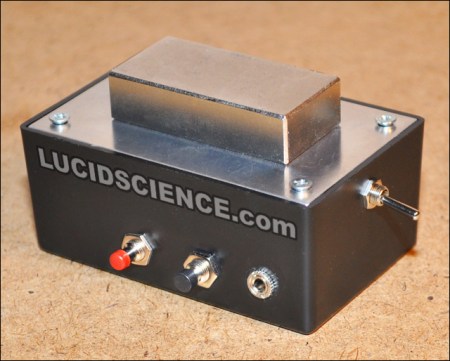
The latest project from Lucidscience.com is a simple AVR based GPS tracker. As usual, the instructions here are quite in-depth including schematics and step by step procedures all the way down to modifying cables when necessary. What we found interesting is that the GPS module he’s using is so simple. It only requires 3 wires, one for power, one for serial communication, and one for a heartbeat.
For the microprocessor, he’s using an ATMega 324, which is a bit of processing overkill but he needed the SRAM for the GPS point storage. You could obviously expand to external storage but the goal here was to keep it extremely simple. Actually, there just isn’t a whole lot here other than the microprocessor, the GPS module, and a level converter. After wrapping up the circuit he goes on to explain how to get the data into Google Earth for display. After a few trips around the block you can see the results are quite nice.
















Very cool little spy device ;-) I would add a zigbee radio that could be used for the serial download or reprogramming the device from a distance. That way once you sneak it onto the car, you never have to even get near it again to figure out where it’s been. Add a cellular module for real-time updates ;-)
I wonder what the difference between NMEA strings and KML formatted files are? Maybe the larger micro can be used to generate KML files directly?
Thanks again HAD for posting one of my projects!
@Brett…
Yeah, that would make an interesting tracker, and my version was an absolutely bare bones project made just to demonstrate the basic.
A lot of the GPGGA data could be ignored or even compressed to save memory, but with an external flash, you would not have to be as concerned.
I sure wish Google Earth had an option to import NMEA data directly – that would make conversion to KML unnecessary.
Cheers!
Brad Graham – LucidScience.com
XD well tracking a car without the owners consent is a felony but still a nice project
“It only requires 3 wires, one for power, one for serial communication, and one for a heartbeat.”
Correction: that would be power, ground, and serial TX.
The 1 Hz heartbeat is generated by the GPS module as a source of extremely accurate time (like what would be used in an NTP time server). It is, however, totally unnecessary in many (probably, most) applications.
That gps module is 80 bucks – ouch!!!
Now I wouldn’t buy a GPS less then $80. My past experience with cheaper ones is, well, that they are cheap pieces of crap.
For the GPS receiver, why not try a Microsoft/Pharos unit?
The Pharos-360 or -500 which come with Microsoft Street and Trips are internally SiRF II, and SiRF III based, respectively. Typically (on sale) you can pick on up for about $30). Interface is 6 wires: Three grounds, and VCC, TxD, RxD. The later two being TTL level serial data. Data format NMEA.
Pharos makes a (rather pricey) optional Bluetooth dock. You snap the Pharos-360 unit in, and it now makes GPS data available on a Bluetooth link.